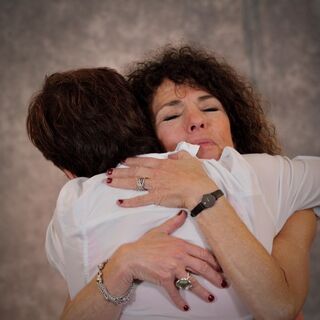Relationships
True Confessions of an Attached Therapist
A transparent look at what really works in therapy.
Posted November 26, 2022 Reviewed by Tyler Woods
Key points
- The therapist-client is the salient factor is successful therapeutic outcome.
- The therapeutic relationship is poorly defined.
- Transparency and authenticity as a therapist prompt good clinical connections.

I have been a therapist for over 45 years. It is the most amazing job in the world. I shepherd people through their darkest times. I hear poignant, often heart-wrenching, stories about people's journeys and marvel at their resilience. I have the privilege of offering compassion, direction, insight, inspiration, and profound caring to others. I bear witness to people’s inner struggles and eventual triumphs. I enthusiastically celebrate their accomplishments and share in their deepest hurts and disappointments. My clients often feel that I am part of the “village” it takes to make their lives hum.
Suffice it to say, I’m attached to the people in my practice. I think about them after hours. I email with unsolicited check-ins. I send poems or book recommendations when I think they might lift someone's spirits. I remember important events—the times their surgeons will call with potentially life-altering results, anniversaries, their children’s graduations, anxiety-provoking talks with family members with whom they haven’t connected in years, or births and deaths in the family. In short, you could say I’m involved.
The client-therapist relationship
Research tells me, this is a good thing. In fact, the client-therapist relationship is the single most important factor in a successful therapeutic outcome.
Who knew?
In graduate school, we were taught about the importance of learning and adhering to a particular theoretical orientation. As it turns out, a therapist's chosen therapy model has very little to do with positive therapy outcomes.
Even now, decades later in my career, despite the recognition of the profound importance of “a good therapeutic relationship,” I still feel that what this actually means remains somewhat of a mystery.
Sure, we know that clients must feel understood, respected, and heard. We also know that there needs to be a fit between a person’s world views and their therapist’s theoretical orientation. Additionally, clients seem to appreciate a collaborative, non-judgmental style. All of this is a given.
But these guidelines still leave a lot of guesswork about how to create that certain “Je ne sais quoi” warmth that has people flocking to some professionals’ practices. Here's what I’ve learned along the way about making magical therapeutic connections.
Bringing myself to my office
First and foremost, when I work with people, I intentionally bring “myself” to my office. Even when therapists are passionate about their therapy models and practice them precisely as outlined in therapy manuals, what clients really get when they seek help is the people behind the therapy models. A therapist's life experiences, values, preferences, beliefs, and personality characteristics are the filters through which even the most structured therapy protocols are filtered.
But what exactly does “bringing myself to work” look like? Although I most certainly have a clinical model guiding me, I’m aware of how much freedom I now give myself to just be myself with my clients. For example, because I love to laugh, a hallmark of my work with couples is good-natured teasing. To me, there’s nothing quite like shared laughter.
I remember the time a husband waited until the very end of a two-day intensive session, when time had run out, to tell his wife that, contrary to what she thought, she had his blessing if she wanted to get breast implants. Before she could respond, I turned to him and quipped, “Oh great, you saved the breast for last.”
Additionally, when I’m moved hearing people's breathtaking, heartfelt experiences, I’ve been known to tear up alongside them. I’m okay with exposing my humanity.
Another thing. Because I've been with my husband for nearly 50 years, I often normalize couples' dilemmas by sharing stories about the trials and tribulations in my own marriage. Some stories showcase my “getting it right,” while others offer a peak into the do-as-I-say-not-as-I-do examples of marital problem-solving. I have been astounded by the number of times clients have thanked me profusely for my transparency.
The connection I feel to the couples with whom I work is profound. I look forward to our sessions, where I receive regular updates on their most recent attempts to incorporate the skills they’ve been learning. I want to hear of their accomplishments and cheerlead their triumphs. I also want to offer reassurance when they miss the mark and help them tweak their approaches for the next time. I thoroughly enjoy being part of the tapestry of their lives.
I continually look for the good in people and almost always find an abundance of it. And the interesting thing about this strengths-based focus is that it builds connection: the more I see the good in people, the more they feel connected to me. Strange how this works, no?
I am humbled by the countless lessons I’ve learned from clients about the richness that is the human spirit. I look forward to the intimacy of our conversations during our sessions. Although I’m beyond proud of my clients’ accomplishments when their therapy goals are completed, I’m the first to admit that the endings are bittersweet. As a rule, I send them off with a hug. I’m sad to see them go and remain endlessly curious about their lives after we’ve parted ways. I cherish the out-of-the-blue emails or calls from ex-clients updating me on their latest adventures.
Therapeutic love
Recently, in a keynote address, I admitted out loud for the first time that I love so many of my clients. I also acknowledged that it was probably unusual to hear the words, “love” and “clients” used in the same sentence by a therapist. But it’s true. I confess. Despite my extremely full, family and friend-filled life, I still have room to love my clients. And, I venture to say, in many cases, the feeling is mutual.
Author Pinky Jones once wrote, “I’d never go to a therapist who doesn’t believe in 'love'—innocent, benevolent therapeutic love—and its infinite healing possibilities.” For that matter, Pinky, neither would I.




